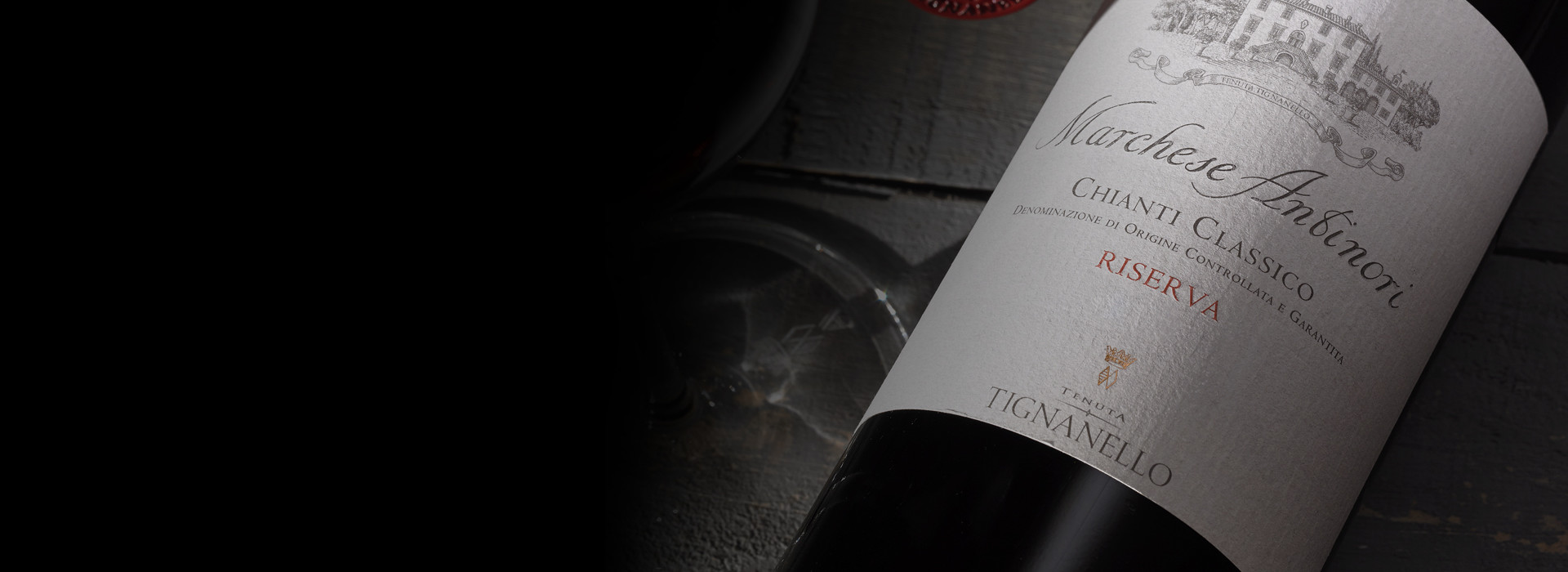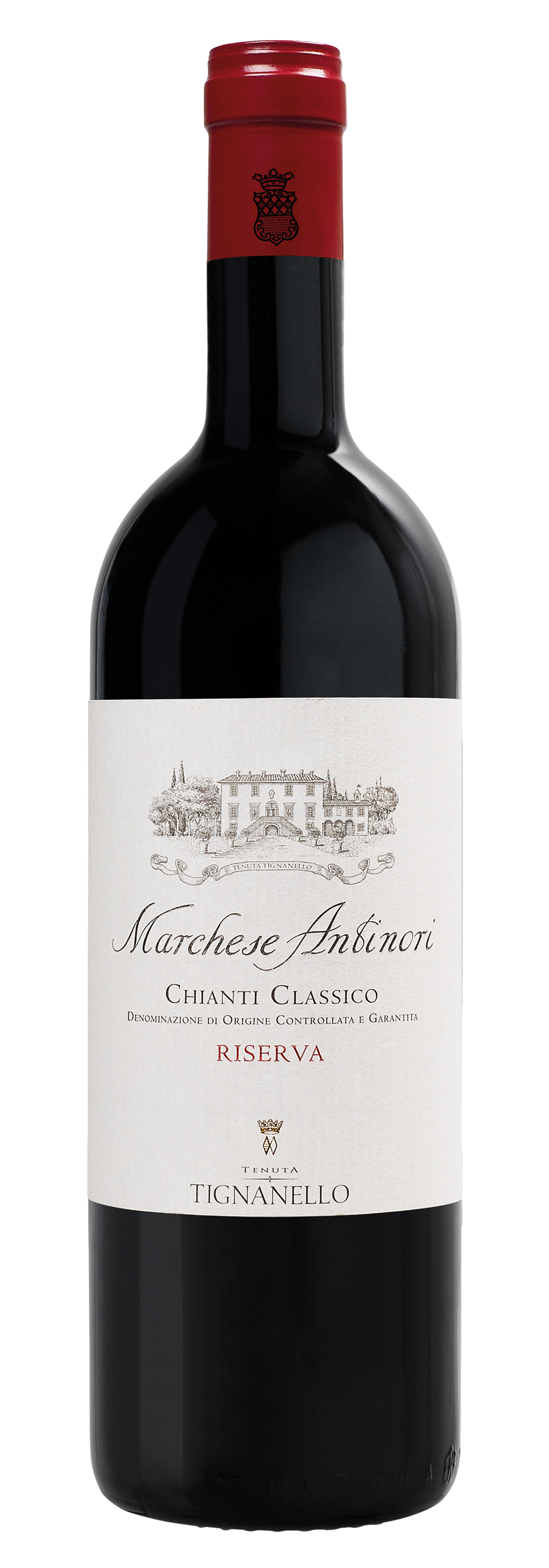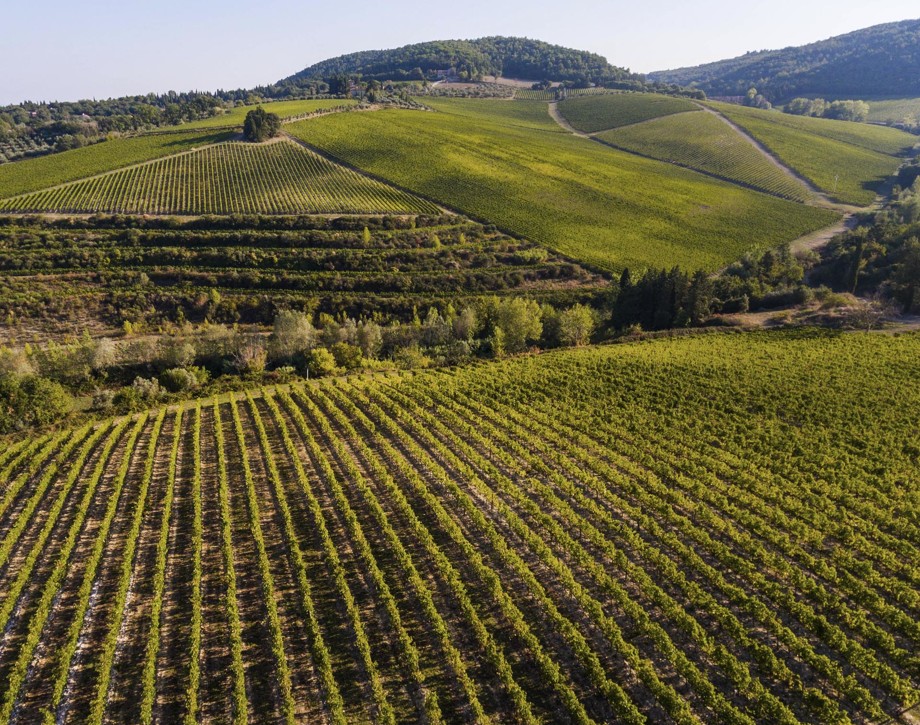Marchese Antinori

Climate
The climate of the 2015 vintage was an extremely regular one and respected, in its various phases and seasons, the typical weather of the Chianti Classico production zone. A cold and relatively dry winter preceded a spring characterized by damp weather in March and April and dry weather in May and June. In this period, temperatures were regular, guaranteeing a perfect growth of vegetation and an excellent phase of flowering and bud set for the grapes. The summer was a warm one, with peak temperatures in July, but also with highly positive temperature swings from daytime warmth to evening and nighttime coolness which assured a constant growth of the grape bunches free of stress. The month of August, warm as well, was characterized by occasional rainfall which favored a fine onset to the ripening of the crop. The picking took place between mid-September and early October in a climate of dry and breezy weather.
Vinification
Once the crop was in the cellars, the grape bunches were destemmed and given a soft pressing. The must which was obtained went into stainless steel fermentation tanks, where it fermented for approximately a week. The period of maceration on the skins was carried out with delicate extraction methods in order to assure a full extraction which, at the same time, maintained the elegance and suppleness of the tannins and structure. After the malolactic fermentation, which took place spontaneously by the end of the year, the blended wine was aged for approximately a year in 60 gallons French and Hungarian oak barrels. A further twelve month period of bottle aging preceded commercial release.
Historical Data
The Tignanello estate is located in the heart of the Chianti Classico production zone, nestled between the valleys of the Greve and Pesa rivers, and extends over close to 800 total acres (319 hectares), some 130 of which (415 hectares) are planted to vines. The vineyards consist principally of the native Sangiovese grape along with such non-traditional varieties as Cabernet Sauvignon and Cabernet Franc. The Marchese Antinori is an historic wine of the Antinori cellars which, since 2011, is produced from the grapes of the Tignanello estate. It is a wine which presents itself as the full expression of the quality and elegance of the Sangiovese of this part of Tuscany.
Tasting Notes
An intense ruby red in color, the wine’s nose shows ripe red fruit along with sustained sensations of vanilla and spices. The palate is ample and enveloping, balanced and vigorous with soft and silky tannins and the finish and aftertaste and long and persistent.
Awards
Wine Spectator 93/100 USA Wine Advocate 92+/100 USA

The Wine
This Antinori family’s historic label, since the 2011 vintage Marchese Antinori has been produced with grapes exclusively from the Tignanello vineyard. It’s made almost entirely with Sangiovese with a small percentage of other complementary varieties. A wine that fully expresses the quality and elegance of Sangiovese grapes grown in this area.

Climate
The climate of the 2015 vintage was an extremely regular one and respected, in its various phases and seasons, the typical weather of the Chianti Classico production zone. A cold and relatively dry winter preceded a spring characterized by damp weather in March and April and dry weather in May and June. In this period, temperatures were regular, guaranteeing a perfect growth of vegetation and an excellent phase of flowering and bud set for the grapes. The summer was a warm one, with peak temperatures in July, but also with highly positive temperature swings from daytime warmth to evening and nighttime coolness which assured a constant growth of the grape bunches free of stress. The month of August, warm as well, was characterized by occasional rainfall which favored a fine onset to the ripening of the crop. The picking took place between mid-September and early October in a climate of dry and breezy weather.
Vinification
Once the crop was in the cellars, the grape bunches were destemmed and given a soft pressing. The must which was obtained went into stainless steel fermentation tanks, where it fermented for approximately a week. The period of maceration on the skins was carried out with delicate extraction methods in order to assure a full extraction which, at the same time, maintained the elegance and suppleness of the tannins and structure. After the malolactic fermentation, which took place spontaneously by the end of the year, the blended wine was aged for approximately a year in 60 gallons French and Hungarian oak barrels. A further twelve month period of bottle aging preceded commercial release.
Historical Data
The Tignanello estate is located in the heart of the Chianti Classico production zone, nestled between the valleys of the Greve and Pesa rivers, and extends over close to 800 total acres (319 hectares), some 130 of which (415 hectares) are planted to vines. The vineyards consist principally of the native Sangiovese grape along with such non-traditional varieties as Cabernet Sauvignon and Cabernet Franc. The Marchese Antinori is an historic wine of the Antinori cellars which, since 2011, is produced from the grapes of the Tignanello estate. It is a wine which presents itself as the full expression of the quality and elegance of the Sangiovese of this part of Tuscany.
Tasting Notes
An intense ruby red in color, the wine’s nose shows ripe red fruit along with sustained sensations of vanilla and spices. The palate is ample and enveloping, balanced and vigorous with soft and silky tannins and the finish and aftertaste and long and persistent.
Awards
Wine Spectator 93/100 USA Wine Advocate 92+/100 USA

Tenuta Tignanello
The Tenuta Tignanello estate is in the heart of Chianti Classico, in the gently rolling hillsides between the Greve and Pesa river valleys. It extends over an area of 319 hectares (788 acres), of which about 130 (321 acres) are dedicated to vines. Two of the estate’s prized vineyards are on the same hillside, Tignanello and Solaia, on soils that originated from marine marlstone from the Pliocene period rich in limestone and schist.
Soil
Calcareous rocky soils with alberese (marl limestone) and marl.
















